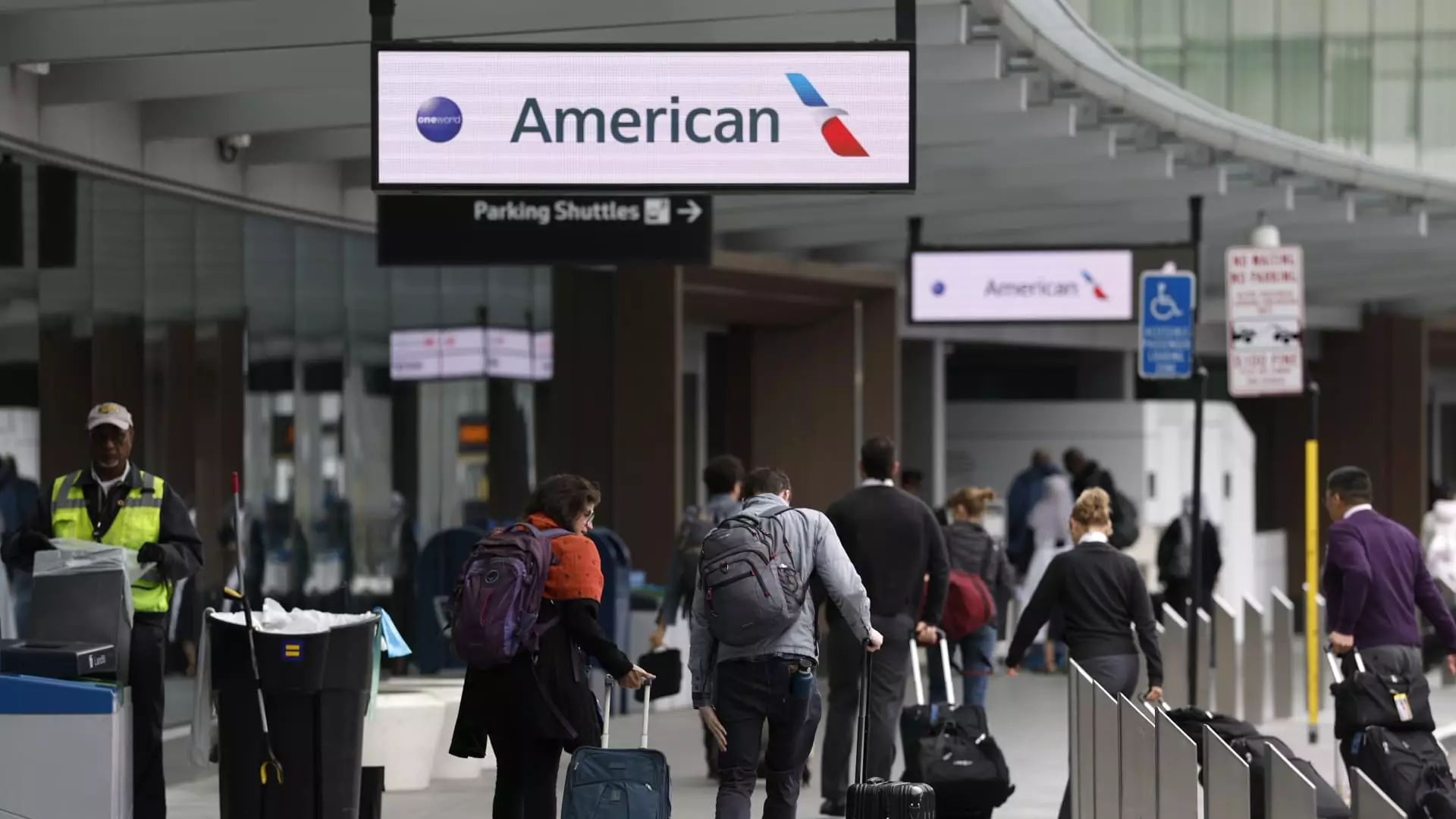In the realm of air travel, optimism often fuels high-flying forecasts. However, the recent earnings calls from major airline executives reveal a different narrative—one shaped by uncertainty and caution. As airline leaders attempt to navigate turbulent economic waters, they find themselves grappling with various factors that suggest that the booming travel trends of the past might not continue. The airlines, having initially set high expectations for 2025, have now readjusted their forecasts, hinting at a pervasive apprehension about demand and the broader economic landscape. This shift speaks volumes about the complex interplay of economic forces at play.
The Uncertainties of Corporate Travel
Travel, particularly corporate travel, has long served as the backbone of airline revenues. More than just a mode of transportation, business travel embodies critical relationships and future investments. Yet recent data shows that demand for corporate travel has plateaued—a stark reminder that companies remain wary of economic instability. Conor Cunningham, an astute travel and transportation analyst, pointedly notes that during periods of uncertainty, corporate travel is often the first budget line to be cut. This trend is particularly troubling given that business travelers tend to be less price-sensitive and frequently opt for last-minute bookings, which traditionally come at a premium.
Moreover, the recent trend of diminishing government travel adds another layer of concern. With the Trump administration’s cost-cutting measures, airlines have lost a significant segment of their clientele. Combine this with an anxiety-ridden corporate landscape, and you have a recipe for reduced air travel demand, as seen in the bleak financial outlooks shared by major airlines.
Falling Airfares: A Double-Edged Sword
To manage their excess capacity, many airlines have resorted to lowering ticket prices. While cheaper fares might seem attractive to consumers, they are emblematic of deeper issues within the industry. A decline in airfare—a whopping 5.3% in March compared to last year—is a clear sign that airlines are struggling to fill their seats. This competitive pricing approach, however, has a hidden cost. Airlines risk cannibalizing their profit margins as they grapple with the dual challenge of increased supply and stagnating demand.
American Airlines CEO Robert Isom’s comments reflect a sentiment shared across the industry: “Nobody really relishes uncertainty when they’re talking about what they could do on a vacation.” If consumers feel uneasy about their economic futures, they are likely to reconsider their travel plans. The concerning implication is that a sustainable rebound in travel might remain just out of reach.
Balancing Domestic and International Routes
Despite homegrown challenges, executives noted that international travel remains robust. This silver lining offers some relief to airlines struggling with domestic seat overcapacity. No longer limited to domestic routes, U.S.-based travelers are seeking experiences overseas, providing airlines with a potential avenue for recovery. The CEO of Delta Airlines recently stated that demand for international travel is holding up considerably, affirming this trend.
However, this only underscores the disparity within the industry. While international travel can provide a much-needed boost, it doesn’t negate the fact that domestic travel—the bread and butter for most airlines—continues to falter. The optimization of routes must therefore strike a careful balance, ensuring that airlines remain agile enough to pivot when circumstances demand.
Understanding the Travelers’ Psyche
The cultural zeitgeist surrounding travel psychology plays a critical role. As vacation-time approaches, what drives the average consumer to book a flight? It’s not merely the availability of inexpensive ticket prices but also a sense of confidence in their financial stability. The ongoing economic uncertainties can lead to a generalized reluctance to commit to spending, especially when it involves significant financial outlay for flights and accommodations. The most telling commentary from industry leaders emphasizes the need for “certainty” to restore consumer confidence, indicating that until this is achieved, the travel sector may remain in a holding pattern.
As airline executives tread through this precarious landscape, it’s clear that the solution must incorporate effective risk management strategies and a keen understanding of consumer behavior. Only by fostering a more informed approach to economic realities can they hope to guide their businesses through turbulent times ahead.

